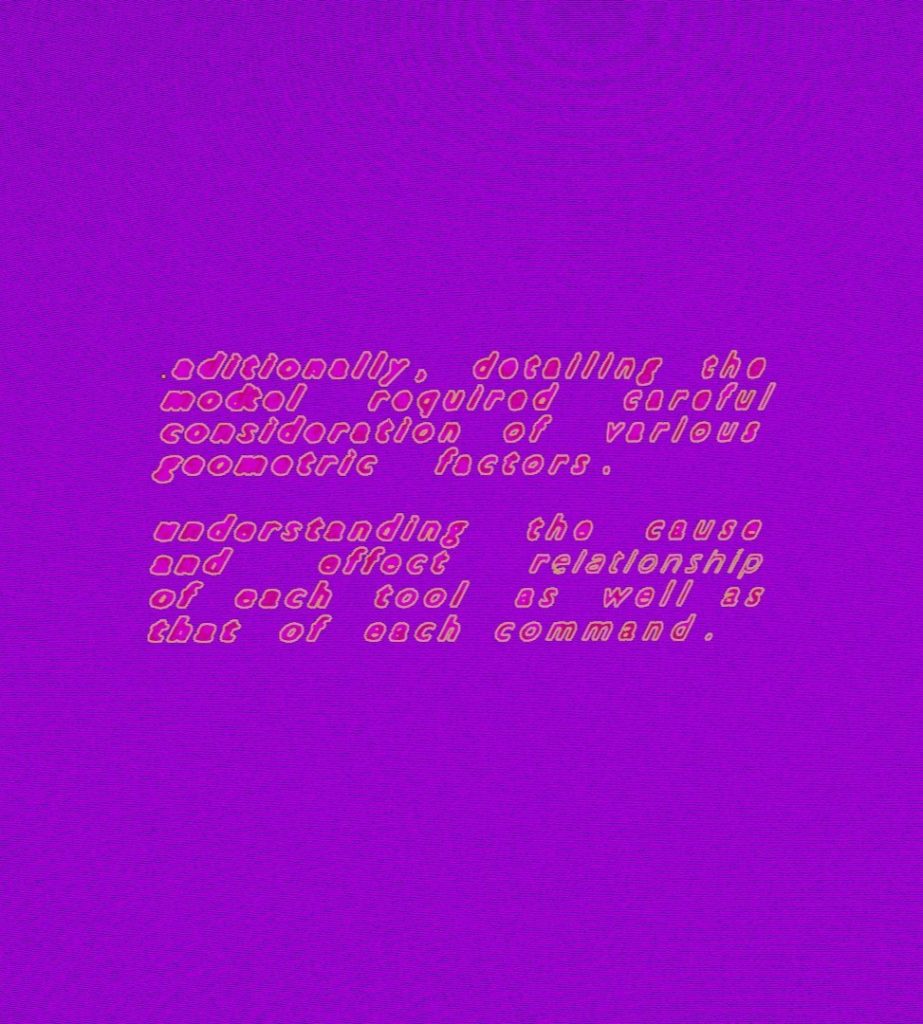UNIT 1: METHODS OF ITERATING
16th JANUARY 2024 – FIRST DRAFT
I selected Blender, a 3D software, as the tool, while the chosen project involves a 3D dragon by the artist Yakub Shieverski.
While I anticipated a substantial amount of sculpting in the development of the 3D dragon, this project leaned more towards the utilization of modifiers, pattern editing, and object transformers, rather than direct sculpting of the object itself.
Consequently, my focus shifted towards maintaining symmetry and precise modeling, emphasizing accuracy over approximation or relying on visual estimation. Additionally, detailing the model required careful consideration of various geometric factors, as neglecting them could compromise the overall structure. Throughout the use of this tool, I encountered several challenges, such as determining how to employ all necessary tools and identifying the most suitable ones to achieve the desired structure. Understanding the cause-and-effect relationship of each tool was also challenging, as some functions did not necessarily result in a noticeable change or addition to the workspace/structure.
The primary outcomes of using Blender are 3D models and animations, which I reckon, are directly relevant to graphic communication design. Considering the prevalent reliance on digital platforms for data consumption in today’s world, Blender plays a crucial role in visually communicating data.
Looking ahead, I believe the next step in exploring this project further could involve a detailed analysis of its structure through 3D printing or the existing tool itself. Subsequently, the design of the dragon’s body structure, particularly it’s curvatures and twisting angles could be critically analyzed.
23rd JANUARY 2024 – SECOND DRAFT
The chosen tool is Blender while the reference I will be using as a lens to critically analyze my project (3D dragon by Yakub Shieverski)is “Conditional Design Manifesto” by Luna Maurer, Edo Paulus, Jonathan Puckey and Roel Wouters.
The text by Luna et al. (2013, pp. 2) emphasizes the impact of media and technology on contemporary life, highlighting the fast-paced and ever-changing nature of our dynamic, data-driven society. Rather than romanticizing the past, the focus is on adapting to current developments and embracing the complexity of the present landscape.
The key principles of the text (Luna et al., 2013), include viewing the process as the product, with a focus on time, relationship, and change. The authors Luna et al. (2013, pp. 2) encourage using logic as a tool to accentuate the intangible, design conditions based on intelligible rules, and engage with input from the external environment, such as nature and human interactions. I made use of these very factors while developing the iterative approach of focusing on the wireframe, which is the nature and environment of the model/structure.
In reference to the above mentioned text, where the authors Luna et al. (2013, pp. 2) advocate for a shift in perspective, moving away from traditional design categories and introducing “Conditional Design” as an approach that prioritizes processes over products, my iterative experiments, focus on the same. To elaborate further, the iterations I have derived from the initial phase of this project (which was to create a dragon using blender as the tool) highlight a whole new perspective in which the same tool can be utilized. Usually, the tool/software blender is used to create 2D and 3D models as well as animations, however, I subverted its main role by focusing more on the process of building the models rather than the final model itself. This in turn led me to begin experimenting with the wireframe structures of the model. Through this experimentation, I was able to deeply analyze the curvatures, flow and language of the model.
This experimentation helped me better understand what the author meant in their text about “Process”. Through this iterative experiment, focusing on the process (i.e. building the structure of the dragon), brought to my attention an unlooked for correlation to the curvature of the structure (i.e. the wireframe) which in fact facilitated a more critical outcome.
Reference List:
- Luna Maurer, Edo Paulus, Jonathan Puckey and Roel Wouters, “Conditional Design Mnifesto”, Conditional Design Workbook, 2013
30th JANUARY 2024 – THIRD DRAFT





